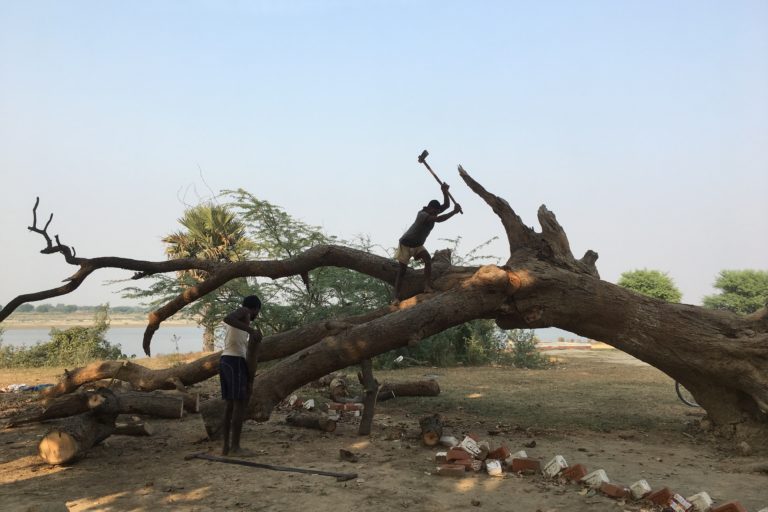Hundreds of trees along the Yamuna river, close to the Taj Mahal have been chopped off to lay a water pipeline by the Smart City Corporation Employees.
The trees were cut on Saturday and after a furore on social media and complaints by the green activists, the police filed an FIR.
Advertisement
Environmentalist Devashish Bhattacharya said, “This is a critical eco-sensitive zone. Felling trees would adversely affect the newly developed green stretch on the controversial Taj Corridor.”
Pandit Jugal Kishore of the River Connect Campaign told IANS: “As soon as we got to know about it we immediately posted pictures on social media and highlighted the callous negligence by the government agencies. The furore led to the filing of an FIR at the Chatta police station naming four persons of the municipal corporation. But the damage has been done.”
A new 1200 mm pipeline is being laid to supply Ganga Jal to Taj Ganj and other distant localities, from the Agra Water Works at Jeoni Mandi. Almost two-thirds of the pipeline has been laid on the Yamuna Kinara road, while a third is being laid along the river bank which had a thick growth of trees.
The Agra Municipal Commissioner and other officials visited the site to assess the damage to the green cover late Saturday evening. The state Forest department officials said strict action would be taken against the contractors and others who destroyed the greenery around.
This area between the two world heritage monuments, the Agra Fort and the Taj Mahal, was being developed as a green buffer to absorb the pollutants and insulate the monuments from the sand of the dry Yamuna.
River Connect Campaigners Rahul Raj, Deepak Rajput, Ranjan Sharma have demanded immediate restoration of the green cover and punishment to all those involved in destroying the trees.
The controversial Taj Corridor in the neighborhood, it may be recalled, brought down the Mayawati government in Uttar Pradesh in 2003.
For over a decade this 20 hectare stretch of the river bed remained a vast “wasteland” but for the past two years, the state Forest and horticulture departments have worked hard to transform it into a lush green area, pleasing to the eyes and an effective green barrier. A large number of foreign tourists visited the area, before the Covid-19 pandemic.











